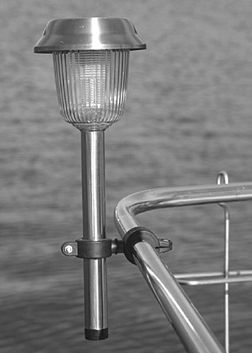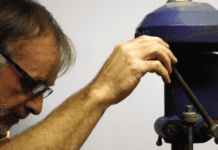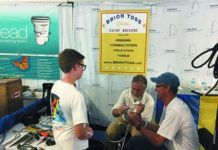
Hood River, OR, a town of about 5,000 hardy souls, is where the Hood River empties into the Columbia River. It’s the epicenter of the Columbia River Gorge National Scenic Area. It sounds like a nice place, except one wonders why the state park is called Starvation Creek.
In the summer, the population swells for a couple of reasons—fruit and windsurfing.
Even though it is increasingly popular to harvest fruit with a big rig that grabs a tree trunk and shakes the ripe fruit into canvas catchers, a lot of workers are needed to pick the apples, pears, and cherries for which Hood River is noted.
Some years ago, it was discovered that the Columbia River Gorge, at this juncture, generates exactly the right variety of winds fancied by windsurfers. The very predictable winds start at midday, which, fortuitously, is when a lot of practitioners get up. Like the scuba divers’ Mecca at Tobermory on Ontario’s Bruce Peninsula, Hood River has become “the place” for windsurfers in recent years.
And now Hood River has a new industry. The head guy at “Simply Brilliant, LLC” is Eric Sanford. He has a new product called a RailLight, and he thinks boat owners might like it.
A RailLight is a small light (it fits in a 5-1/2″ x 5-1/2″ x 8-1/2″ box and weighs but 11 oz.) that marries a 2″ x 2″ solar cell embedded in the top with a white LED. The container is brushed stainless steel. Sanford claims that it’s weatherproof.
Along with the light, which sells for $28, the package contains a set of nylon clamps that can be configured to attach the RailLight vertically or horizontally to a rail, a pulpit, a dinghy transom, a hatch, essentially anything not more than 2″ thick.
The idea is to park the RailLight in the sun to charge a small internal battery that will power the LEDs when it gets dark. There is a switch to make it automatic (via a photoelectrical cell) or manual.
When anchored in a strange harbor, it would be nice to set up the RailLight before the crew goes ashore in the evening. Or take it in the tender. It would be nice, too, to light the cockpit when relaxing aboard. Down below, the RailLight provides enough illumination for one person to read or do a bit of chart work.
The big question is: How much light for how much sun?
“Up to eight hours,” Sanford told claimed.
For the moment, PS will assume he’s correct. We’ll set the RailLight up outdoors and rigorously test it for a few months. If it falls short of the eight hours or the weather gets to it, we’ll let readers know. Otherwise, it seems like a versatile and useable gadget.
Contact – Simply Brilliant LLC, 888/557-6464, www.sollight.com.



































